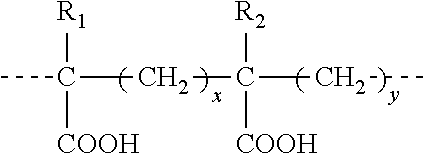Vaccine adjuvant and making and using the same
a technology of adjuvants and vaccines, applied in the field of vaccine adjuvants and/or immunomodulators, can solve the problems of poor immune response, increased use of antibiotics for treatment, and low use of adjuvants, so as to improve the performance of vaccines without damaging hatchability or performance parameters of broiler chickens
- Summary
- Abstract
- Description
- Claims
- Application Information
AI Technical Summary
Benefits of technology
Problems solved by technology
Method used
Image
Examples
example 1
[0085]Studies on immunostimulation using the coccidiosis model.
[0086]Experiments with PSE gave positive effects on the immune system and on protective immunity against coccidiosis, as measured by immune challenge after vaccination with live coccidia. PSE was extracted from raw peanut skins by boiling in distilled water, then dried by cryo-evaporation. The resulting residue was diluted with physiological saline to a wide range of concentrations (60-1000 mcg) and tested for toxicity to 18-day-old chicken embryos.
[0087]The inoculation of PSE seemed to have no toxic effects on the embryos, and did not appear to affect growth rate of the hatchling chicks. A laboratory strain of Eimeria tenella was used as live coccidiosis vaccine (1000 oocysts per bird), and was given by individual oral gavage to day-old chicks. At 28 days of age, each bird was challenged by inoculation of virulent cecal coccidia (a field isolate of E. tenella with a challenge dose of 100,000 oocysts per bird) or kept as...
example 2
[0091]Identification of the optimal dosage of active ingredients in peanut skin extract (PSE) for immunostimulation in combination with five coccidiosis vaccines, and demonstration of the safety of PSE for broiler chickens.
[0092]The model for test of effectiveness in combination with a live coccidiosis vaccine is described in Example 1 and as follows. Embryos are inoculated at 18 days of incubation with graded doses of PSE or purified proanthocyanidin. The procedure for inoculation in ovo is similar to that used in commercial practice, with the Embrex technique (see, e.g., Ricks, et al, 1999, 1999. In ovo vaccination technology. Adv. Vet. Med. 41:495-515. Academic Press, San Diego Calif.), or the Inovoject process, both of which are widely practiced in the USA and South America. Controls are inoculated with an equivalent volume of physiological saline. Coccidiosis live vaccine is given after hatch (day-old) by the spray-cabinet technique, similar to a commercial procedure widely use...
example 3
[0097]Use of appropriate disease models to identify other vaccines in poultry where significant responses to PSE could enhance effectiveness of the vaccine and promote increased productivity and protective responses.
[0098]Of particular importance is determination of the effects of PSE on response of chickens to viral and bacterial diseases. Live vaccines are used for several viral diseases, such as, but not limited to, Muck's disease, Newcastle disease, infectious bursal disease, laryngotracheitis, and infectious bronchitis. To establish antiviral immunostimulation, PSE is initially tested in concert with live vaccines for Newcastle disease and infectious bronchitis. Each of these tests is set up in the same way, with embryos injected with PSE at 18 days of development. Hatchling chicks is vaccinated with Newcastle vaccine (common type used in USA for broilers) at day-old, or kept as unvaccinated controls. Chicks are housed in isolators with filtered air to preclude extraneous infec...
PUM
| Property | Measurement | Unit |
|---|---|---|
| diameter | aaaaa | aaaaa |
| time | aaaaa | aaaaa |
| volume | aaaaa | aaaaa |
Abstract
Description
Claims
Application Information
 Login to View More
Login to View More - R&D
- Intellectual Property
- Life Sciences
- Materials
- Tech Scout
- Unparalleled Data Quality
- Higher Quality Content
- 60% Fewer Hallucinations
Browse by: Latest US Patents, China's latest patents, Technical Efficacy Thesaurus, Application Domain, Technology Topic, Popular Technical Reports.
© 2025 PatSnap. All rights reserved.Legal|Privacy policy|Modern Slavery Act Transparency Statement|Sitemap|About US| Contact US: help@patsnap.com


